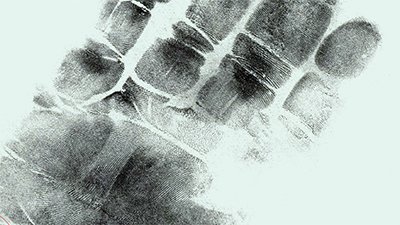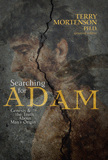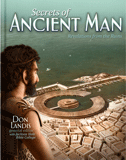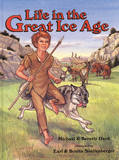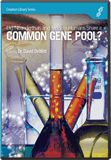
Stop Calling Neanderthals “Not-Quite-Human Creatures”!
Neanderthals and Denisovans . . . some of their genes are in us because they helped our ancestors survive.
Genealogy—knowing your roots—has always been popular. Today genetic analysis can be used not only to track inheritable disease but also to shed light on a family’s history. That is true not just for individual families but for the family of man.
Though Bible-believing creationists were not surprised, a while back many were shocked to learn that Neanderthal genes and Denisovan genes were present in the genomes of many modern people. In fact, their genes have helped make many of us what we are today, medically speaking at least. The DNA inherited from archaic people groups affects the modern human’s immune system and vulnerability to certain diseases and even the high-altitude tolerance of Tibetans. Some characteristics associated with the archaic genes preserved in modern genomes were probably helpful in the world in which those archaic people lived, equipping them better to survive, even though changing conditions make those genes less useful to most modern people.
Genetic Gifts from the Past
USA Today recently reported on the latest confirmation of the widespread and useful nature of our archaic genetic inheritance. The writer of “Early Man’s Love Triangle With Neighbors Helped Us Survive” presents the latest from Current Biology’s study “Archaic Hominin Admixture Facilitated Adaptation to Out-of-Africa Environments.”1 Study coauthor Joshua Akey explains that intermingling genetically with Neanderthals and Denisovans, groups thought to be well established in Europe when early modern humans arrived, “wasn’t just some curious feature of human history. [It] actually had consequences, and it helped our ancestors survive and reproduce.”2 Akey’s study reports that the genomes of Europeans, East Asians, South Asians, and Melanesians have been enriched by genes related to immunity and skin pigmentation. The traits governed by these genes affect the ability of people to cope with local conditions. Therefore these genes, acquired by the intermingling of these people groups, are thought to have been preserved and passed on to modern people because they improved the chances of those with them to survive and reproduce. The study described in USA Today confirms studies we discussed earlier this year in “Is Your Allergy-Prone Immune System the Result of Neanderthal Influence?”
“Not-quite-human”?
Sadly, the USA Today writer perpetuates the notion that the Neanderthal and Denisovans in our past are something less than human. She calls them “these not-quite-human creatures.” This evolutionary notion is incorrect. If Neanderthals and Denisovans had not been human, they would not have been able to produce children with early modern humans. Furthermore, though no Denisovan archaeological sites have yet been discovered, the more we learn about Neanderthals from archaeology, the more it is plain that Neanderthals were fully human, not some sort of high-end ape-men.
Like many other humans, Neanderthals knew how to heat water and organize their homes, cook their veggies and consume medicinal herbs, make complex tools and paint on cave walls, apply make-up and wear jewelry, bury their dead and even plant flowers around their graves.3 Despite the fact that they left no known written account of themselves, evidence indicates that Neanderthals were not just grunting brutes but would have been able to discuss their relationships with early modern humans using real language.4
People in the Family of Adam
Most of us do not appreciate having our ancestors demeaned and insulted. On a broader scale this should be true of our attitude toward the archaic humans in modern man’s past. These valuable bits of DNA many modern humans carry around came from people of the same created kind as Adam and Eve and ourselves. They were fully human. Furthermore, because Neanderthal DNA, Denisovan DNA, and modern human DNA is all human DNA, it is clear that no molecules-to-man evolution was involved in passing on their genes to us.
Actually these discoveries about the importance of archaic human genes in the make-up of moderns—when stripped of the evolutionarily derived dates and evolutionary assumptions about the origin of man—support the biblical history of our common descent from Adam and later from the people that dispersed from the Tower of Babel. From the biblical account of history, we understand that Neanderthals, Denisovans, and early modern humans were not sundry evolutionary products—a position neither biblical history nor experimental biology supports. They could only be the descendants of people who dispersed from the Tower of Babel sometime after the global Flood of Noah’s day. Some isolated groups of people would have developed distinguishing traits, but all were still human. And though people emigrated away from the Tower of Babel, intermarriage between groups would be no surprise. That our innate immunity and other helpful traits are significantly rooted in our archaic DNA is a reminder that those people who faced that post-Flood world were equipped by God’s design to deal with the varying conditions they faced.
It’s time to stop giving evolution the credit for our existence and our survival. And it’s also time to stop, in this time-lapse “prehistoric” prejudice, calling other people who were made as much in the image of God as ourselves “not-quite-human.”
Learn more about the genetic contributions we moderns have inherited from our neighbors from the past in “Is Your Allergy-Prone Immune System the Result of Neanderthal Influence?” And remember, people are people, created in the image of God, whenever and wherever they are.
Footnotes
- Rachel Gittelman et al., “Archaic Hominin Admixture Facilitated Adaptation to Out-of-Africa Environments,” Current Biology 26: 1–8 (2016) doi:10.1016/j.cub.2016.10.041.
- Traci Watson, “Early Man’s Love Triangle with Neighbors Helped Us Survive,” USA Today, November 10, 2016, http://www.usatoday.com/story/news/2016/11/10/early-mans-love-triangle-neighbors-helped-us-survive/93587214/.
- This is confirmed by excavations in France (see Ker Than, “Neanderthal Burials Confirmed as Ancient Ritual,” National Geographic, December 16, 2013, http://news.nationalgeographic.com/news/2013/12/131216-la-chapelle-neanderthal-burials-graves/) and Kurdistan in northern Iraq (see Owen Edwards, “The Skeletons of Shanidar Cave,” Smithsonian, March 2010, http://www.smithsonianmag.com/arts-culture/the-skeletons-of-shanidar-cave-7028477/?no-ist).
- Genetic analysis of the Neanderthal genome has shown that the form of the FOXp2 gene associated with language learning in modern humans matches the Neanderthal gene. (See “FOXP2 and the Non-Evolution of Human Language” and “Red-Haired, Fast-Talking Neanderthals” to learn more.) Furthermore, evidence indicates that Neanderthals were, like modern humans, predominantly right-handed. Having a dominant hand is uniquely human, signifying brain lateralization, and it is a feature that makes language possible. (See “Handedness of Early Humans Speaks Volumes.”)
Recommended Resources

Answers in Genesis is an apologetics ministry, dedicated to helping Christians defend their faith and proclaim the good news of Jesus Christ.
- Customer Service 800.778.3390
- © 2024 Answers in Genesis



